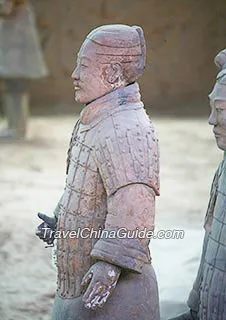To add some additional models to the scene, I created some modular ruins that could be placed around the scene.
I started by focusing on some archways, inspired by this concept:
I began by constricting and extruding an archway, using the standard 3ds max tools.
I focused on where I wanted the break in the archways to be, building the breakage around the top of the collumn.
I used the extrude tools to add some detail and volume to the breakage on the archway.
I also used the inset tool, to create a border around the collumn - and make it look the archway is constructed of stacked blocks.
Once in zBrush, I sculpted the rubble on top of the archway.
I started off with a hard surface build up brush, before masking the area off to add some surface noise deformation and erosion.
I then turned my attention to the columns themselves.
I added some light stone textures, before using another buildup brush to bring out the border of the stone bricks.
For the insignia I used an alpha to extrude the shape.
Once happy with the model, I exported it and then returned to my scene.
Since this was going to be a modular ruins, I began to split up the columns and archway.
I split up the top rubble, and square block so that they could be placed around the scene at will. The intention was to stack the blocks up to make our own columns
For other ruin pieces I looked at a reference of some greek modular ruins:
I decided to try and replicate these models, as I felt they could be really useful to spread around the scene to create unique ruins, using a few pieces.
For each model I made a simple shape then took it into zBrush and add some rocks and cracks to detail them:
For the ruined stairs I looked at some other artist's zbrush sculpts as both reference and inspiration:
I worked backgrounds for this, constructing the highpoly first to get all the details in place:
I then retopologised the highpoly model to create the low-poly one:
I also made a squarer collider for the model, so the player can work on it more easily.
Once I was happy with all my models, I unwrapped them into one map and baked out some maps and textures.
Once the model was in dDo, I messed around with the different stone textures.
I settled on the painted and regular concrete, as they had a nice smoothness to them, but still looked crisp and rocky.
I also placed the models into unity, so I could see how they looked:
I was satisfied with the results of these models.
I think for a quick modular piece, they came out very well.
I think given more time, I would like to of had more variations to the archways, so that we could have less repetition in the scene, when it came to posing them.
Personally I also believe having these modular pieces earlier on, would of made for a better start to constructing our world, but that's just hindsight.


























































